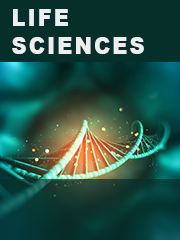The global Oncology Drugs market size is estimated to be $178.5 billion in 2023, it will reach $431.3 billion by 2032, growing at a CAGR of 10.3% during the forecast period from 2024 to 2032.
One of the key trends in the Indian Oncology Drugs market is the increasing adoption of targeted therapies. These drugs are designed to target specific molecules or pathways involved in the growth and spread of cancer cells, and have been shown to be more effective and less toxic than traditional chemotherapy drugs.Another trend in the market is the growing importance of biosimilars.
Healthcare Providers
Patients
- Treatment Demographics
- Age Distribution: The median age for cancer diagnosis is 66 years. However, the incidence of cancer in younger populations (ages 20-49) is also significant, accounting for about 10% of all cases.
- Gender Distribution: Men have a slightly higher incidence rate of cancer than women, with lifetime risk being 39.3% for men and 37.7% for women.
Medication Utilization
-
Treatment Adoption
- Chemotherapy: Still a cornerstone of cancer treatment, with over 60% of cancer patients undergoing some form of chemotherapy during their treatment course.
- Targeted Therapy: Increasing in popularity, with about 25% of cancer treatments involving targeted drugs that specifically attack cancer cells.
- Immunotherapy: A rapidly growing field, with around 15% of cancer patients receiving immunotherapy, expected to rise due to its promising outcomes.
Economic Impact
Future Outlook
-
Innovations and Research
- Pipeline Drugs: Over 1,200 oncology drugs are currently in the development pipeline, with a significant focus on personalized medicine and immunotherapy.
- Clinical Trials: There are approximately 10,000 active clinical trials globally focused on cancer treatment, involving tens of thousands of patients.
-
Policy and Support
- Government Initiatives: Many countries are increasing funding for cancer research and treatment programs, with initiatives like the U.S. Cancer Moonshot aiming to accelerate progress in cancer prevention, diagnosis, and treatment.
This report studies the Oncology Drugs market, covering market size for segment by type (Cytotoxic Drugs, Targeted Drugs, etc.), by application (Lung Cancer, Stomach Cancer, etc.), by sales channel (Direct Channel, Distribution Channel), by player (Roche, Abbvie, Novartis, Pfizer, Bristol-Myers Squibb, etc.) and by region (North America, Europe, Asia-Pacific, South America and Middle East & Africa).
This report provides detailed historical analysis of global market for Oncology Drugs from 2018-2023, and provides extensive market forecasts from 2024-2032 by region/country and subsectors. It covers the sales/revenue/value, gross margin, historical growth and future perspectives in the Oncology Drugs market.
Leading Players of Oncology Drugs including:
- Roche
- Abbvie
- Novartis
- Pfizer
- Bristol-Myers Squibb
- Eli Lilly and Company
- AstraZeneca
- Sanofi
- Bayer
- Merck
- Amgen
- GlaxoSmithKline
- BioMerieux
- Bio-Rad Laboratories
- Gilead Sciences
- Including or Excluding key companies relevant to your analysis.
Market split by Type:
- Cytotoxic Drugs
- Targeted Drugs
- Hormonal Drugs
- Others
Market split by Application:
- Lung Cancer
- Stomach Cancer
- Colorectal Cancer
- Breast Cancer
- Prostate Cancer
Market split by Sales Channel:
- Direct Channel
- Distribution Channel
Market split by Region/Country:
- North America (United States and Canada)
- Europe (Germany, UK, France, Italy, Spain, and Russia, etc.)
- Asia-Pacific (China, Japan, Korea, India, Australia, and Southeast Asia, etc.)
- South America (Brazil, Mexico, and Argentina, etc.)
- Middle East & Africa (Turkey, UAE, Saudi Arabia, and South Africa, etc.)
If you have any special requirements, please let us know and we can provide you the customized report as you want.
